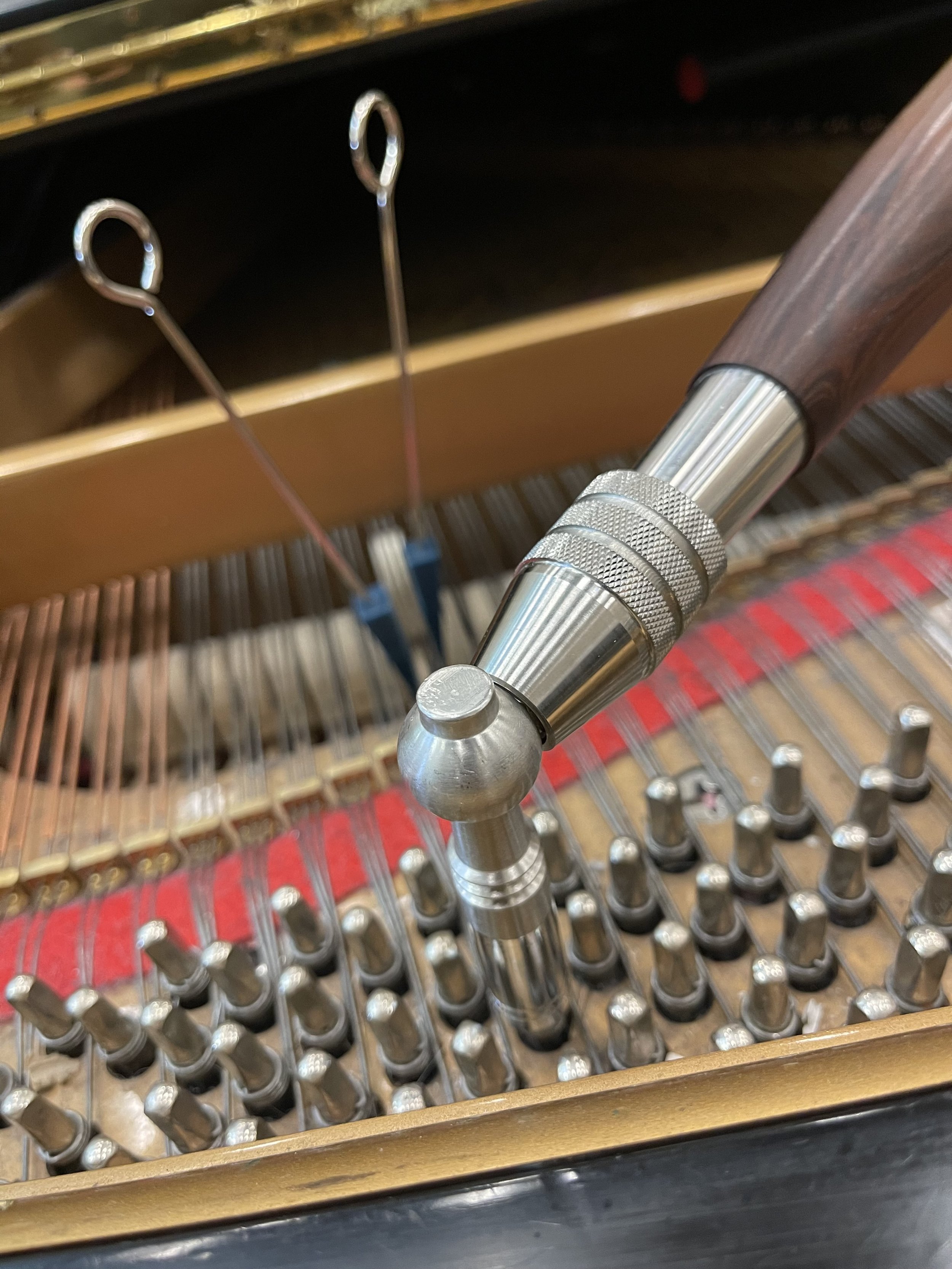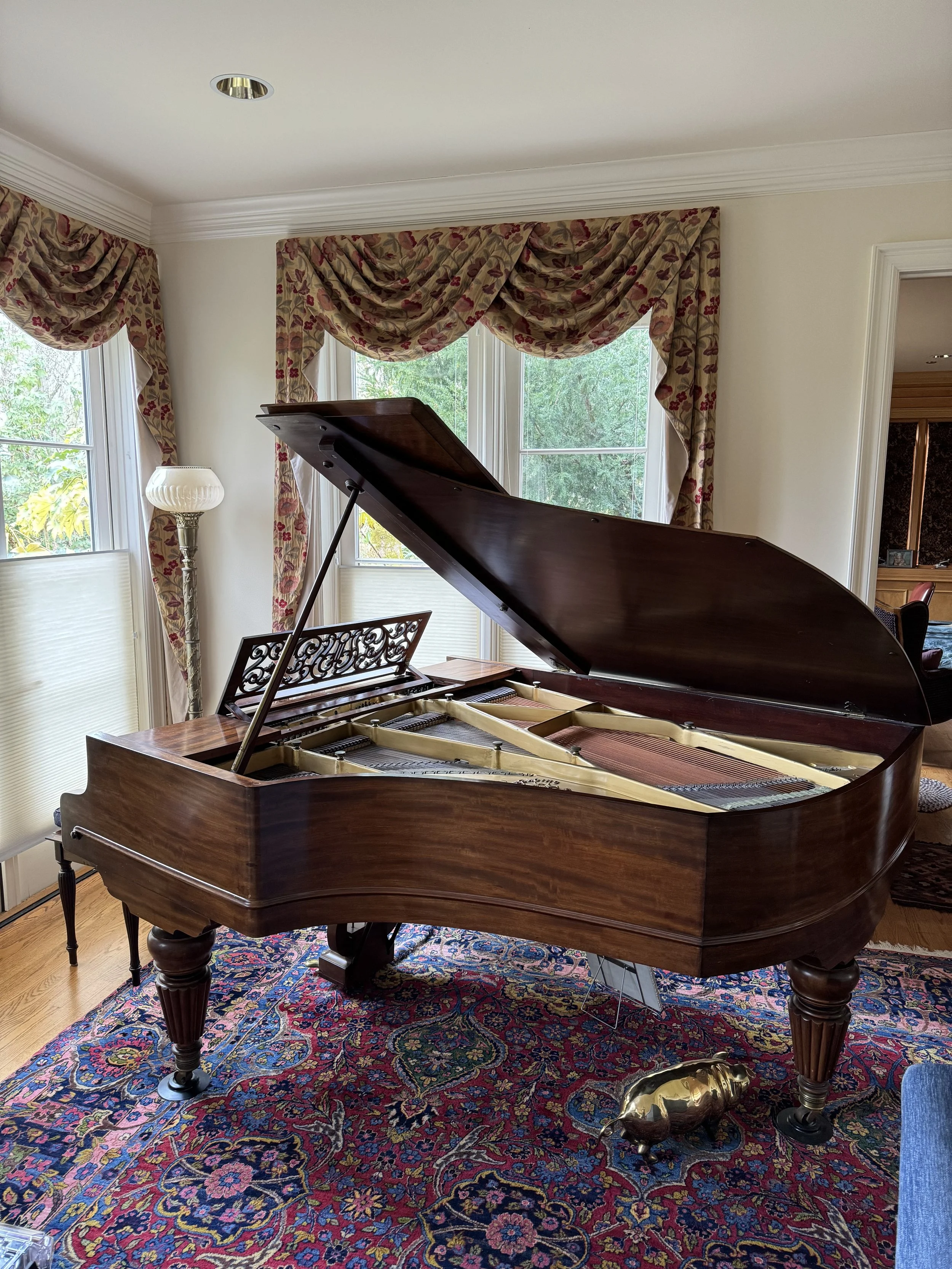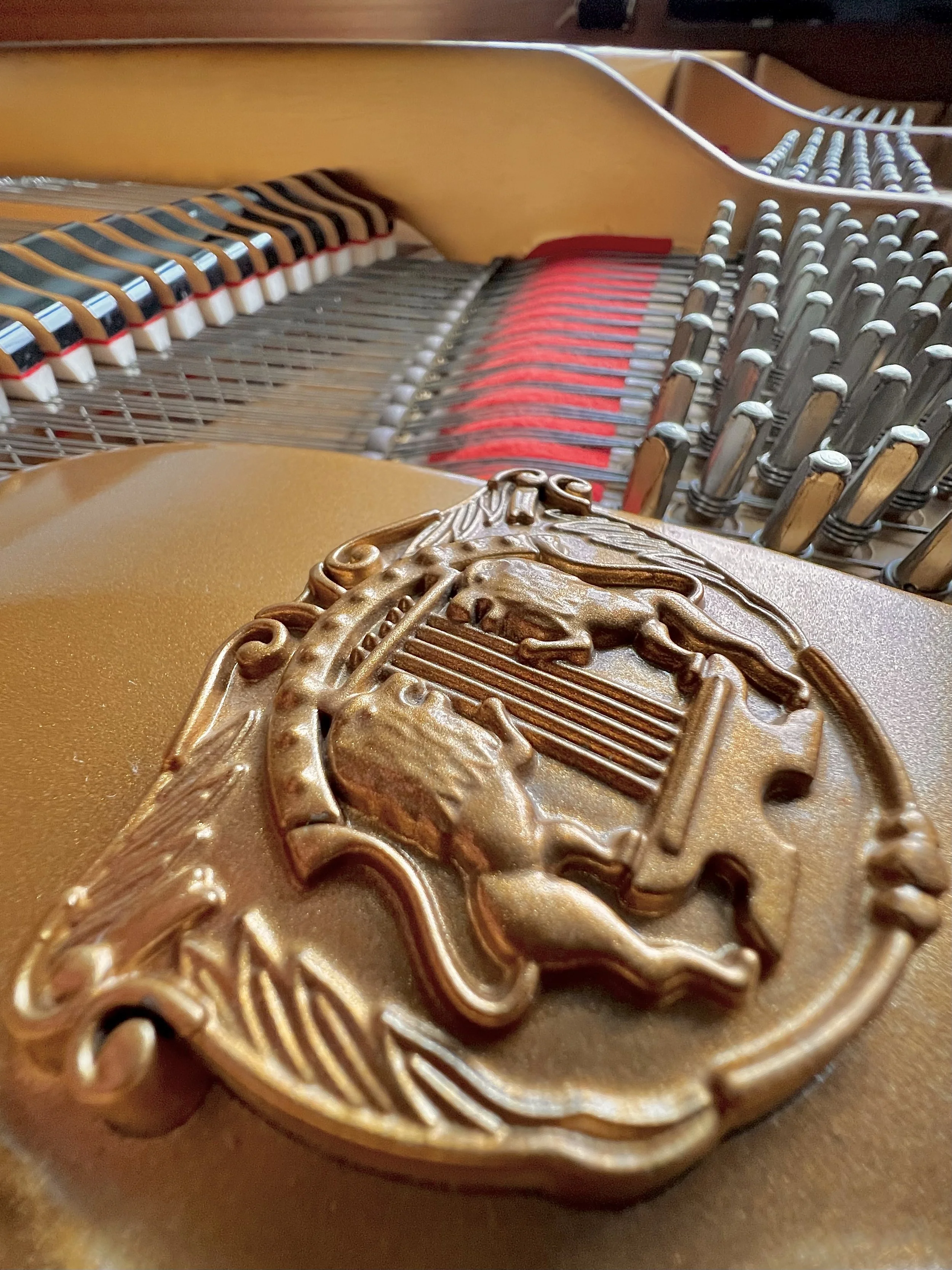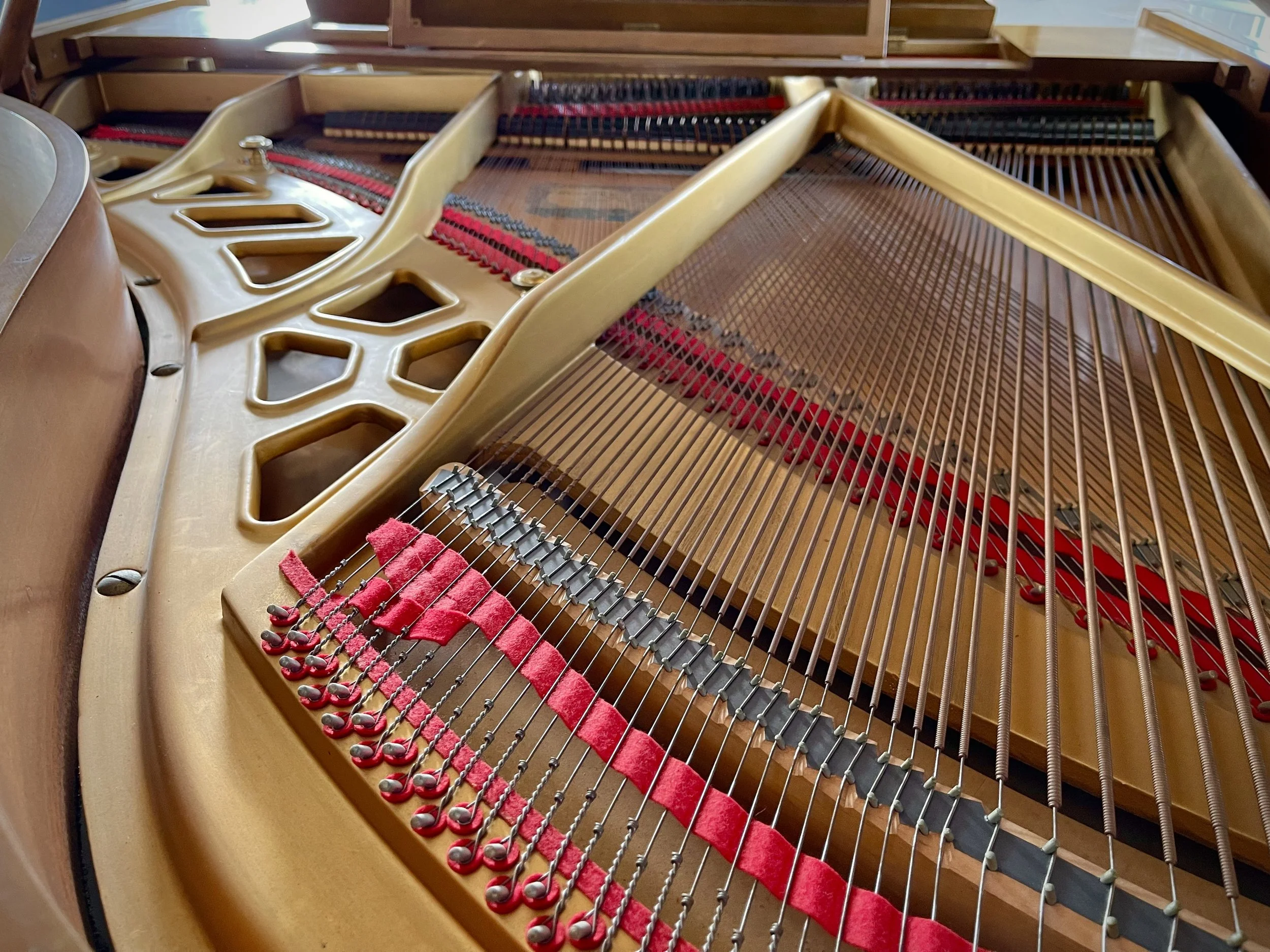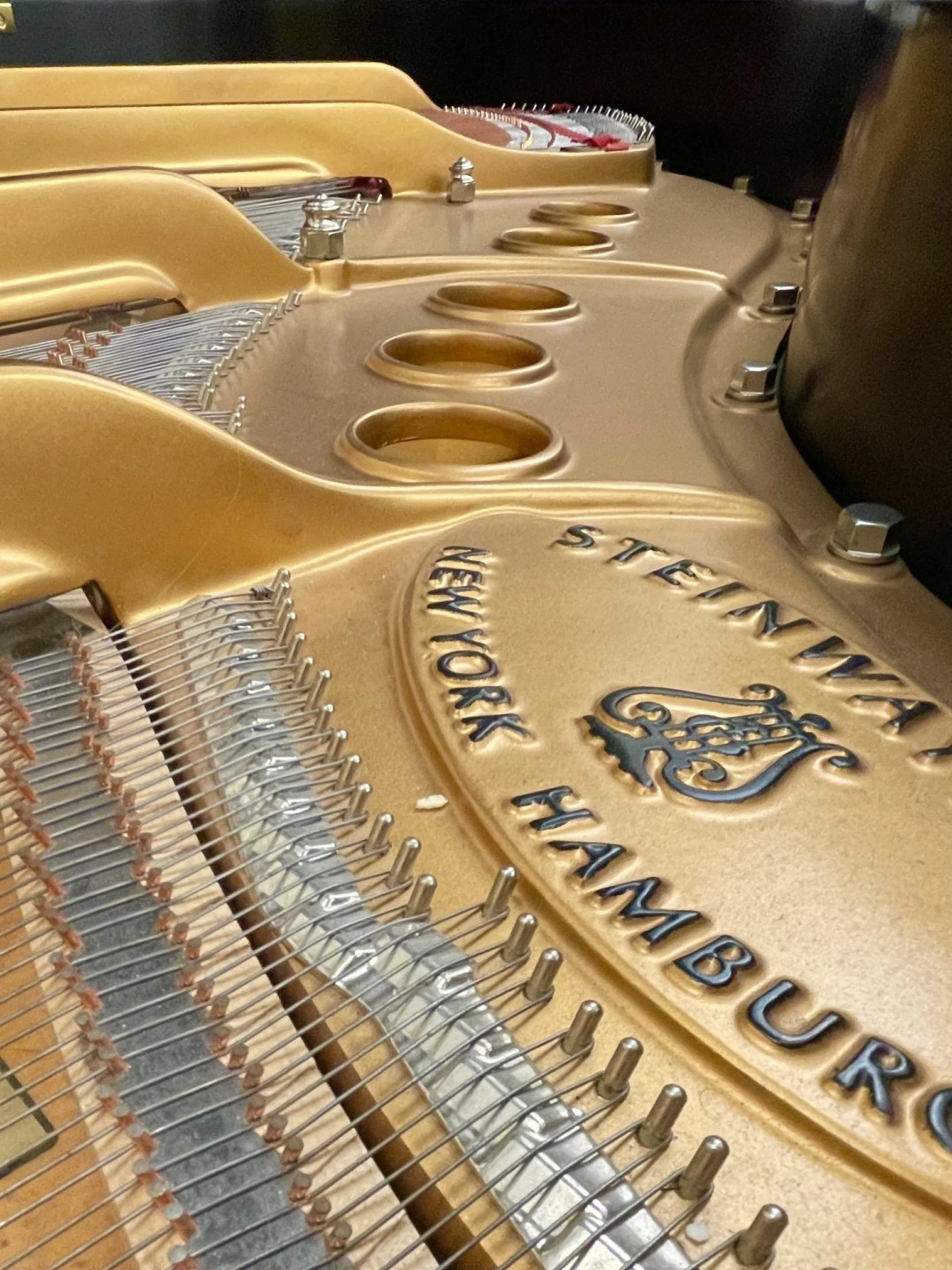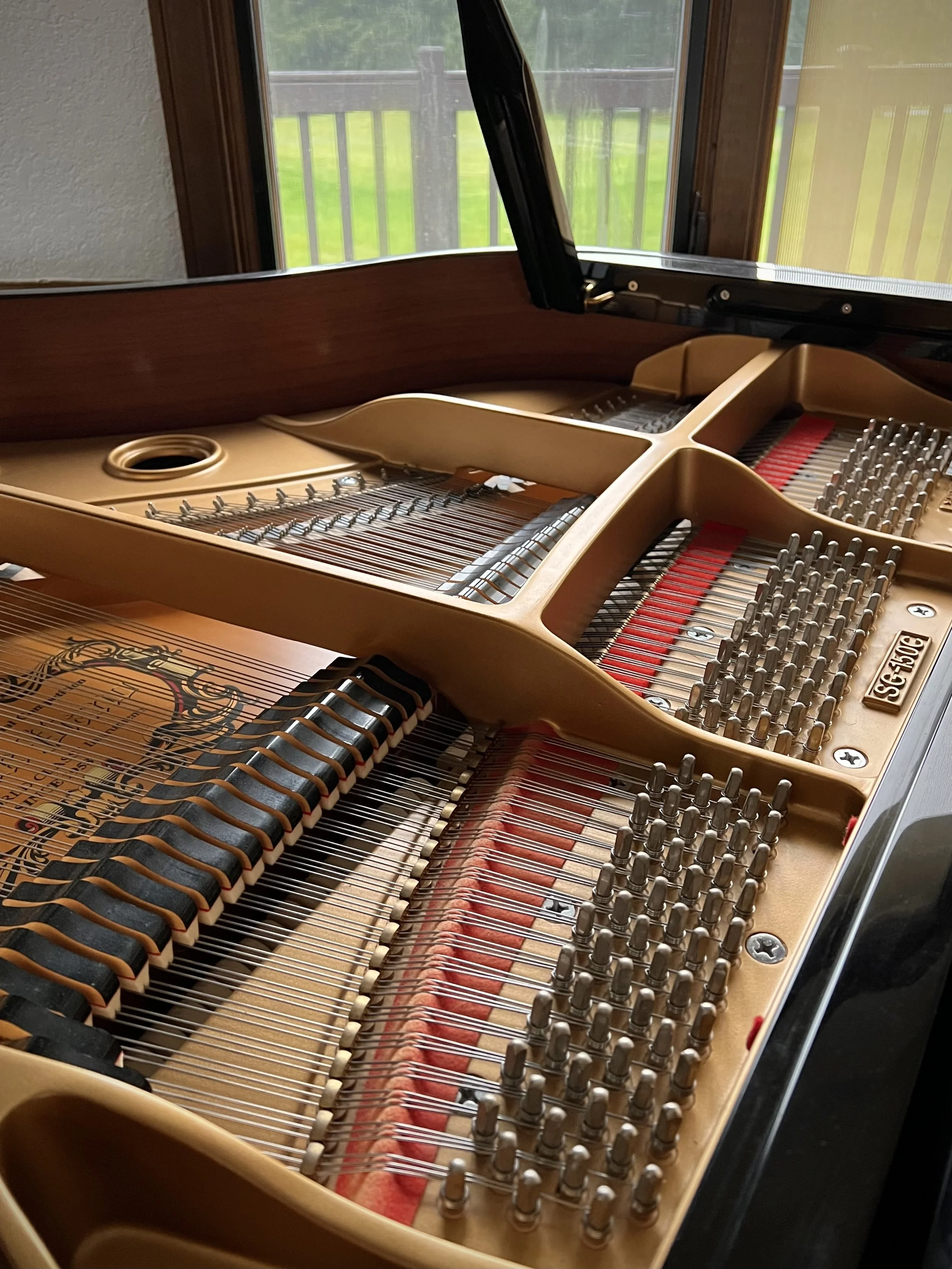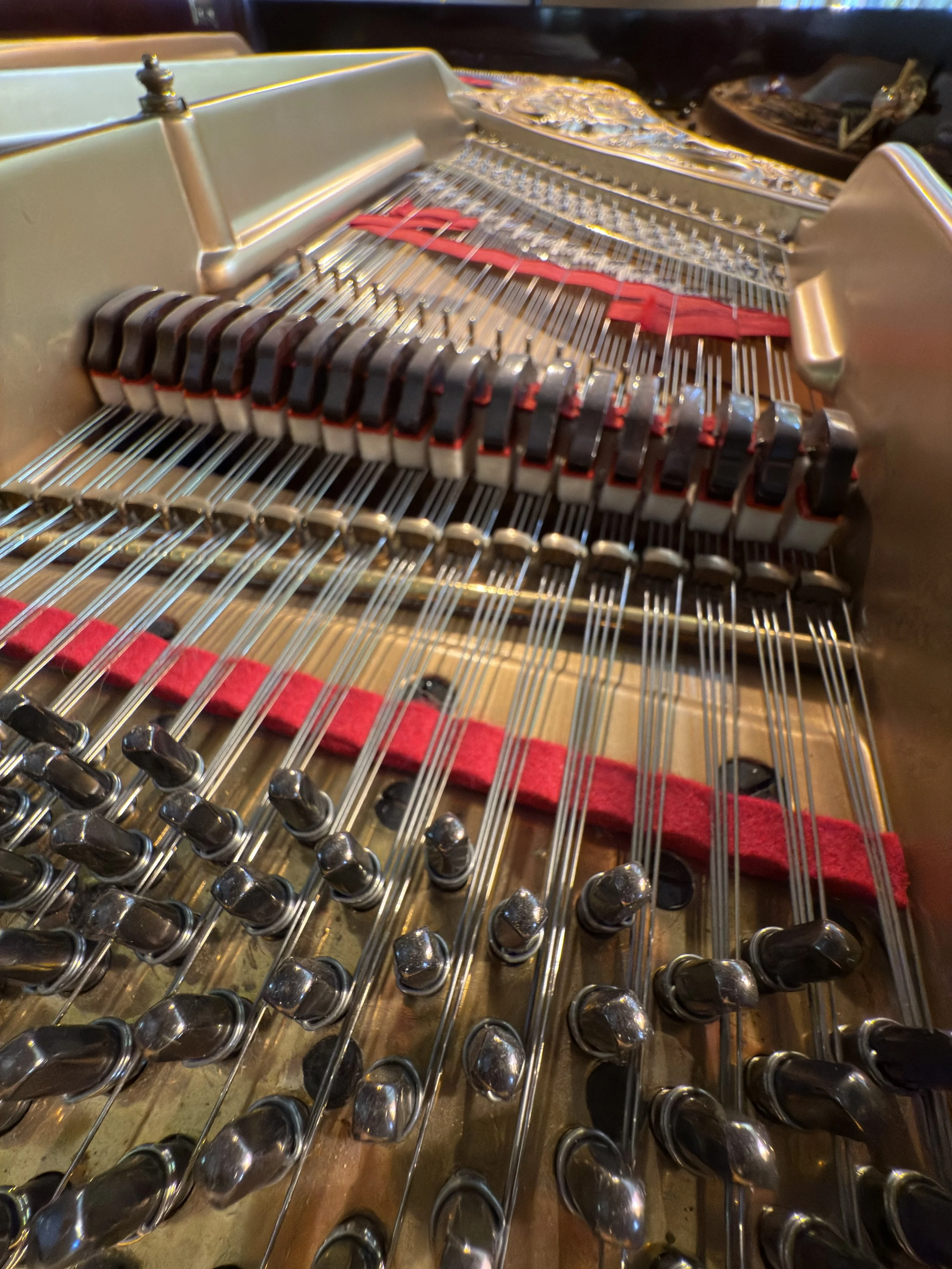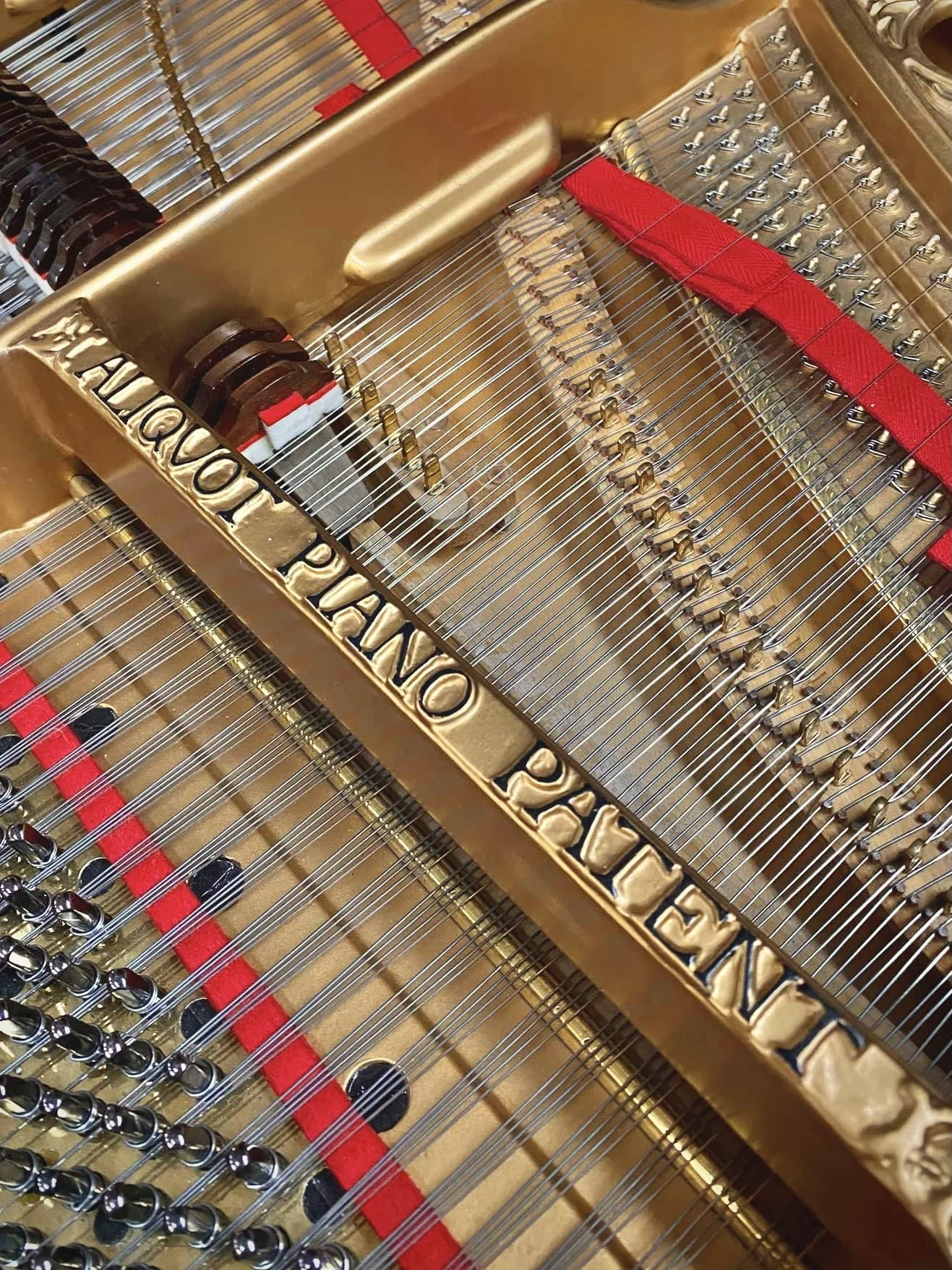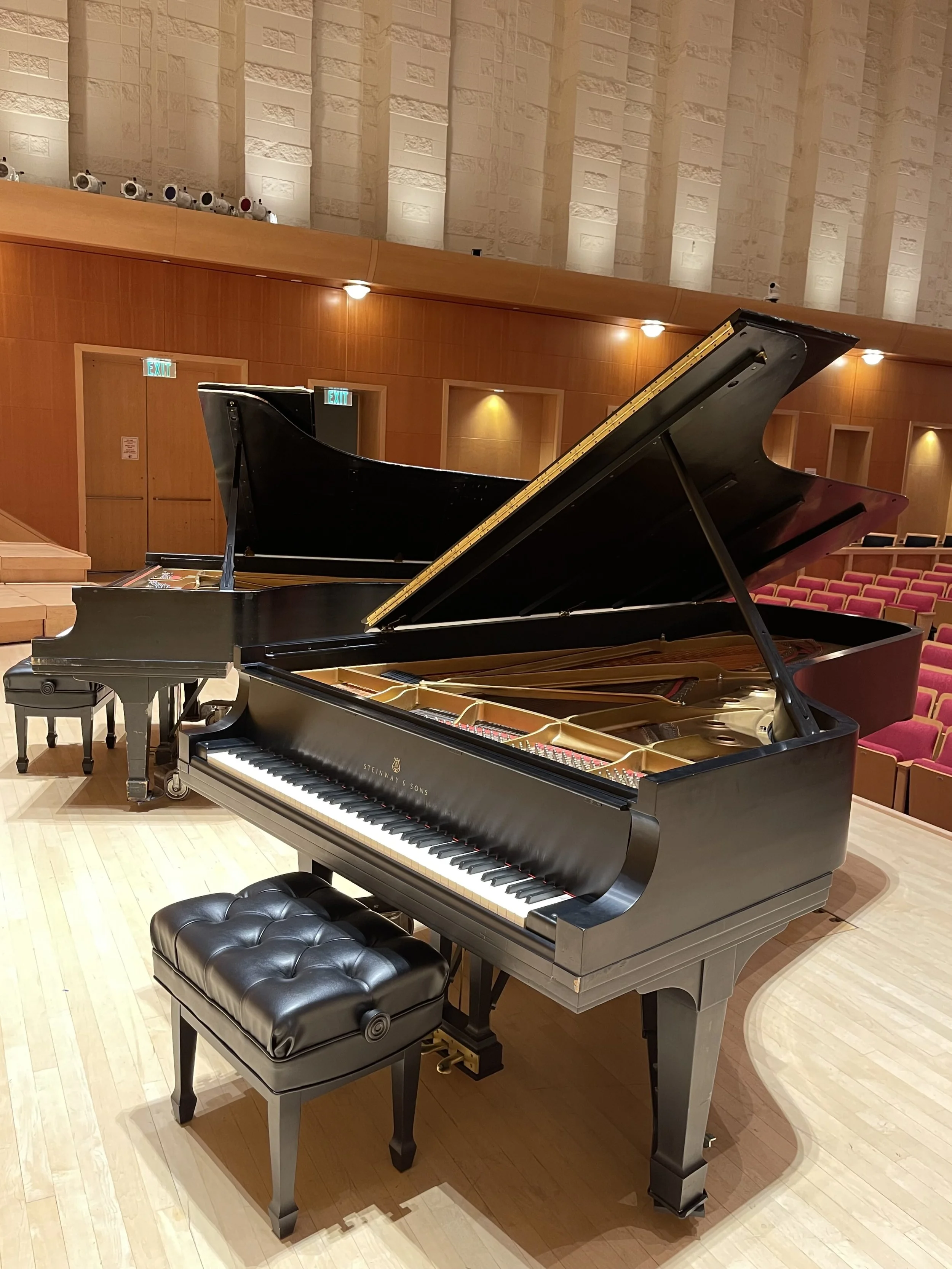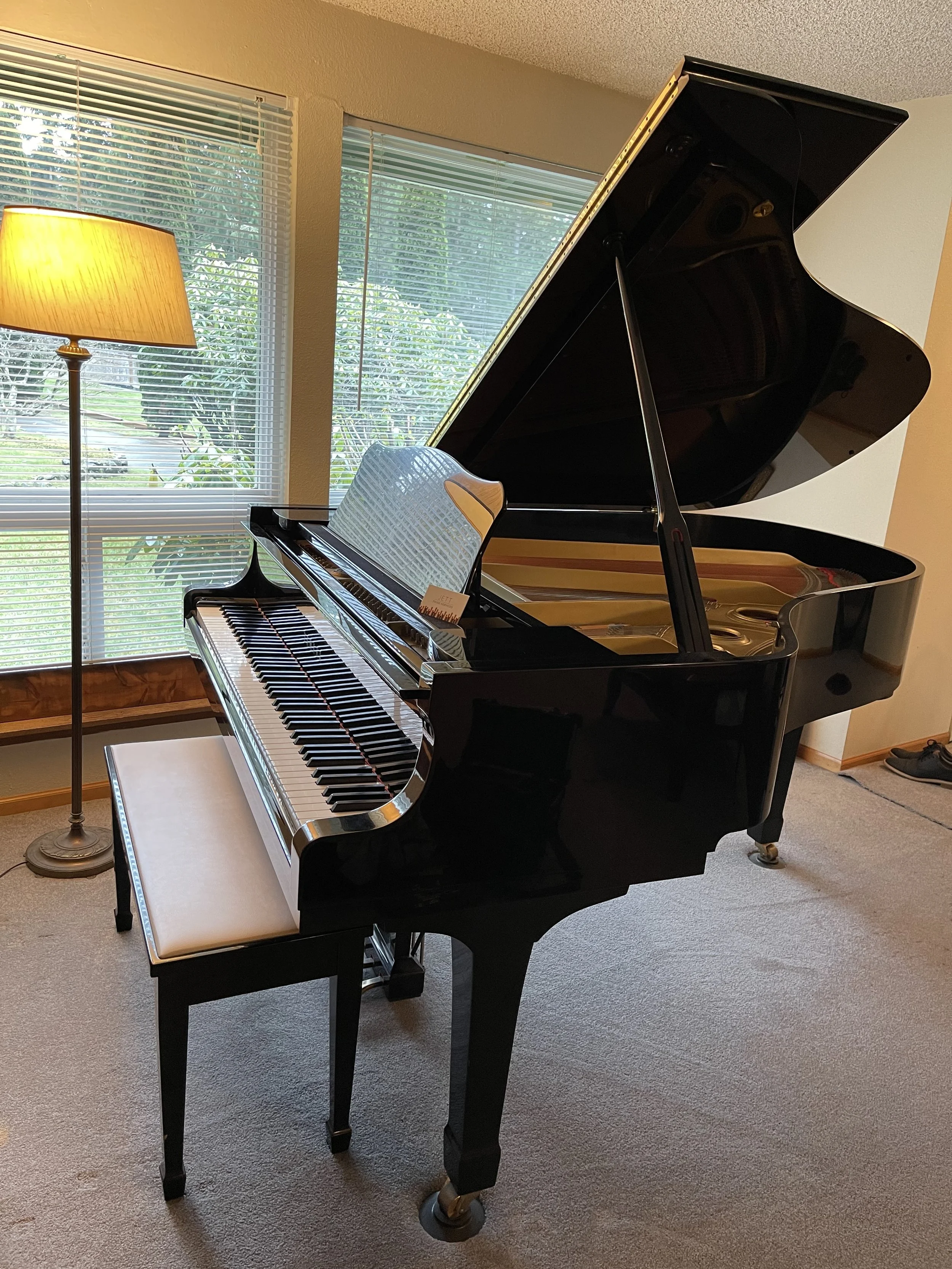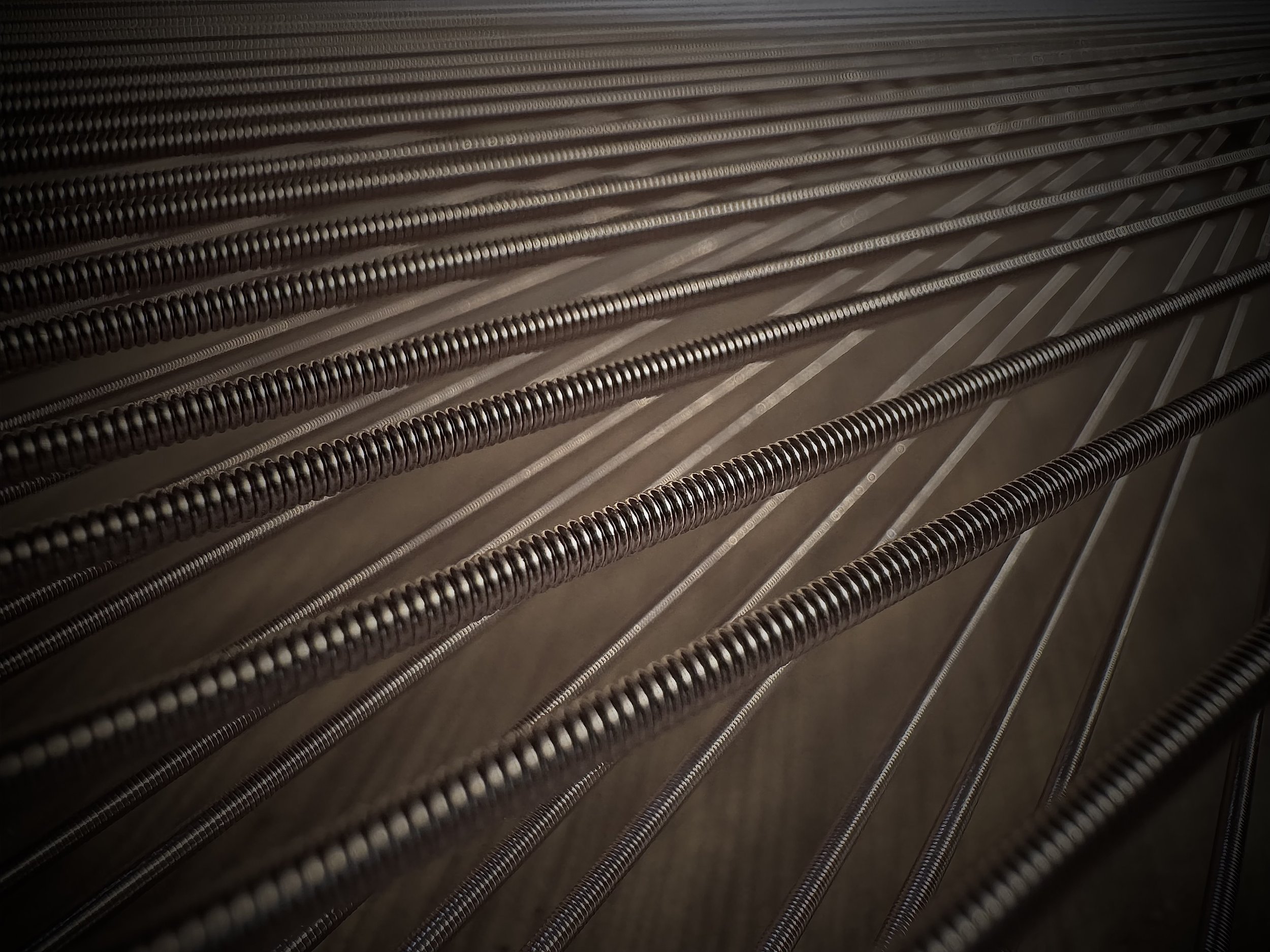
Piano Tuning
Tuning is the most important service, not only to maintain the best sound a piano can produce, but also to maintain consistent tension on the soundboard. Most manufacturers recommend tuning twice per year.
Seasonal changes in humidity, temperature, and heating or AC cause wood and metal parts to expand and contract, affecting string tension and pitch. Each string holds about 150 to 200 pounds of tension. With over 200 strings, the piano is designed to be constantly under 15 to 20 tons of tension. Over time, strings stretch, losing tension and causing pitch to drop. Regular tuning maintains proper tension and pitch.
Without tuning, the pitch will eventually drift far enough that a pitch correction is needed. This is a preliminary tuning that brings the piano closer to standard pitch before fine-tuning can be done.
During pitch corrections, strings drop in pitch as increased tension from tuning surrounding strings shifts tension throughout the piano. Anticipating this, Technicians apply an estimated over-pull, but the result isn’t precise enough for an acceptable tuning. If the piano is significantly off-pitch, multiple corrections may be needed; if it’s close to standard pitch, no correction is needed.
Regular tuning ensures that the piano remains in good condition and reduces the need for pitch corrections. The sound of your piano is influenced not only by tuning but also by voicing.



